- Mining Moth
- Traces of the Mining Moth
- Biological method
The chestnut mining moth is a representative of the family of small moth, the caterpillars of which in a unique way harm the leaves by gnawing at them. The name is derived from the previous explanation of the word "mine" - the creation of hidden passages.
The greatest danger of a chestnut mining moth and other varieties of the family is that it is far from immediately possible to understand that the tree is infected. Most often this happens when the chestnut tree is already very weak or dead. It is worth spending one summer on a tree of a colony of a mining moth, most of the crown will not be saved.
Appearance description
Adult moth looks like a butterflyreaching the order of a centimeter in full wingspan. Its color is very bright: a brick-red body (less often - orange) with white spots. Black scales are “scattered” on the body and legs in a mess. The mining moth in the photo looks pretty and harmless, but the appearance, as often happens, is deceiving.
Moth larva its shape resembles a spindle, her body is painted in an unpleasant faded milk color. As it develops, the larva becomes a caterpillar with developed limbs located on the thoracic and abdominal parts. A mouth opening is gradually formed, with the help of which the pest is able to gnaw dense chestnut leaves.
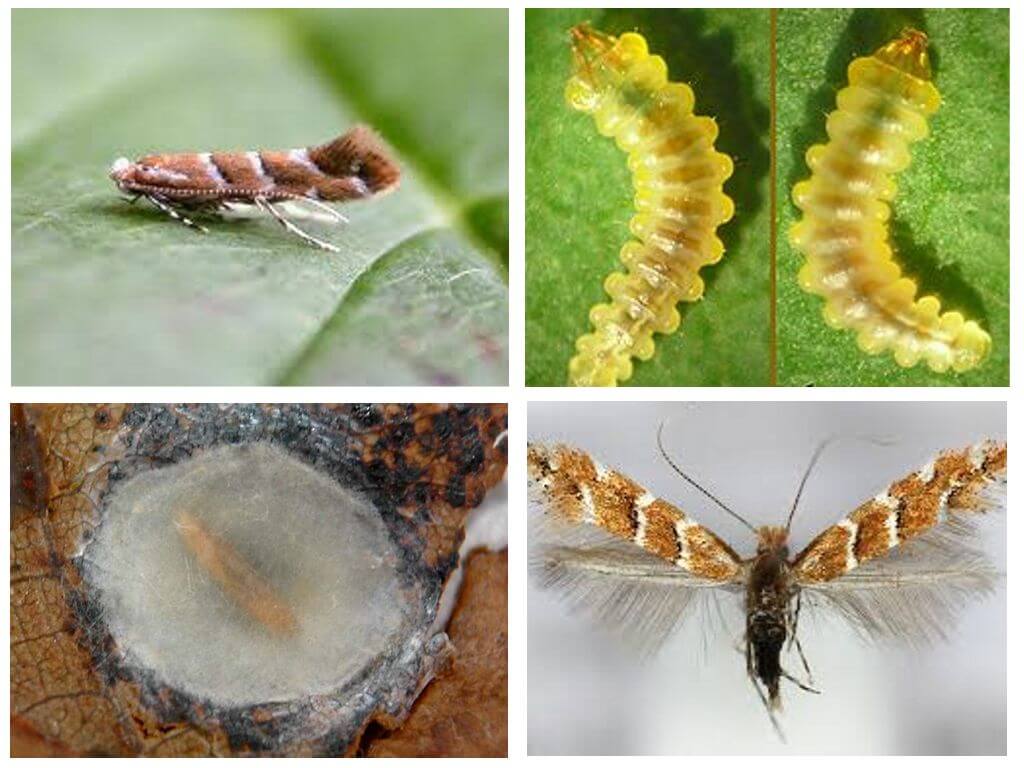
Important!
According to observations, the activity of the parasite lasts two years in a row, after which you can forget about it for several years.
Breeding
The time of laying the eggs of the chestnut moth is not difficult to notice: during this period they curl around the chestnut tree in great numbers. One individual is able to lay about 50 eggs in one clutch. The larvae hatch in just a few days and directly from the eggs penetrate the thickness of the chestnut leaf. The larva is isolated from the environment, since the inlet is blocked by an egg - mine.
The development of the chestnut moth larva occurs in stages:
- The first three of them are growing, gaining mass. At this time, he eats only juice, begins to make a move;
- The fourth stage is turning into a caterpillar. From this moment begins eating fiber, the active expansion of living space;
- The fifth stage is the same caterpillar gaining mass;
- By the sixth stage, he stops eating, spins a thread for a cocoon.
After that, the insect pupates. In the chrysalis, there is a transformation into an adult, coming into the light along with chestnut flowering.
The harm of a mining moth
This insect is dangerous to a huge number of different plants. A chestnut mining moth gnaws passages in the leaves, which leads to a significant weakening of the plant. Given that adults can carry viruses of various diseases, epidemics can occur in parks or greenhouses infected with them.
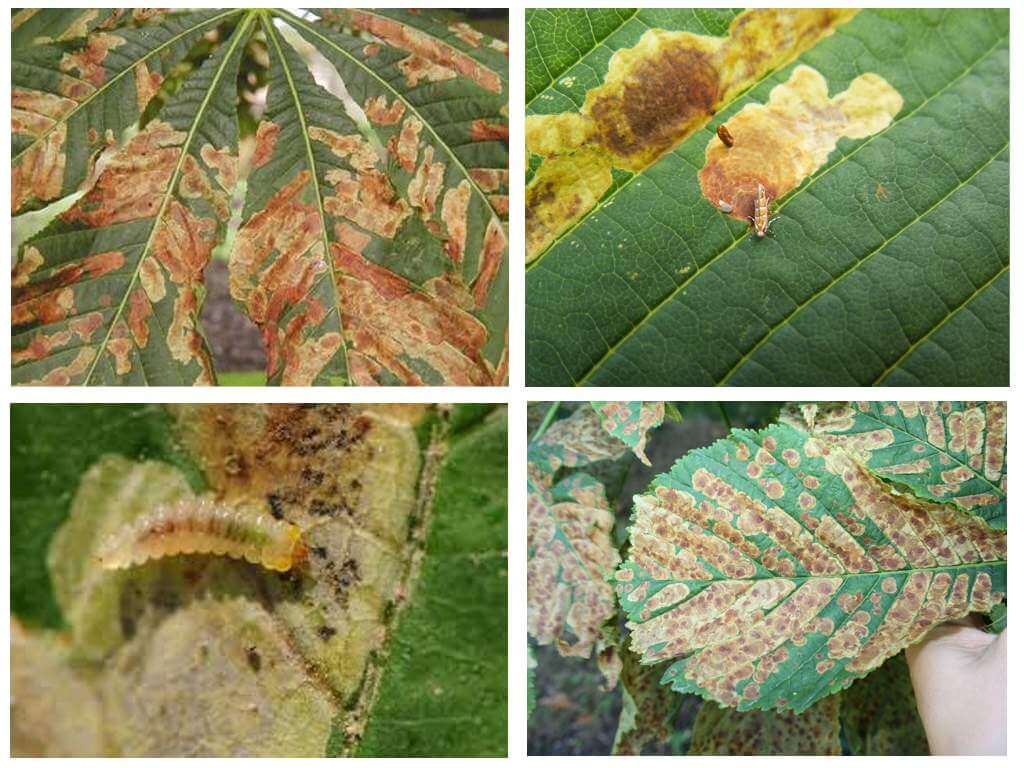
Important!
In one season, chestnut moth is able to make several clutches. Thus, by the end of the year, the leaves of the chestnut are mottled with moves that kill them, weakening the tree itself. As a result, many of them are unable to survive the winter.
The destruction of the chestnut moth
Scientists have long wondered how to get rid of a chestnut mining moth, and all its relatives, such as cabbage, burdock moth. As a result of the study, it turned out that the struggle can be waged in several ways, which are divided into chemical and biological methods. It is worth considering each of them separately.
Biological method
It has been observed that chestnut moth is food for some representatives of birds and insects:
- Tits, starlings and sparrows are most active on chestnut moths. In seasons when the insect attacks chestnuts, it is necessary to attract as many of these birds as possible to squares and parks;
- Mining moth is a favorite treat of tree bugs and several species of beetles;
- In order to save the plants affected by the mining moth, a trichogram is released - a rider laying eggs in the larvae of these insects. Riders larvae hatch from eggs, feed on “miners” and gradually kill them.
The latter method is not very popular, since it is difficult to say what such a large congestion of parasite riders can lead to.
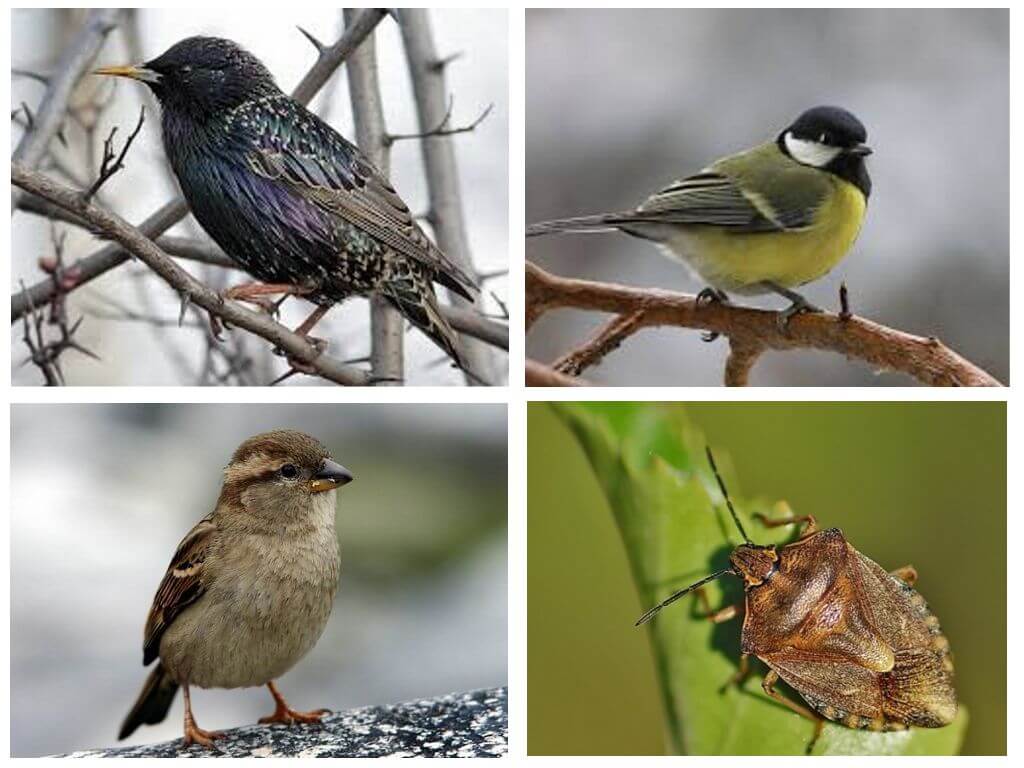
Chemical way
Although the spraying method is quite effective, it is dangerous to use it on the chestnut tree on which the mining moth has settled, because these trees are usually planted in crowded places.
In recent years, a new method has been used: insecticides are placed in the openings of the trunks. This method makes the plant unsuitable for eating chestnut mining moths. However, experts fear that the poison may be part of the nectar, which will lead to the poisoning of bees and other useful "flyers" collecting nectar.
Biosecurity
Scientists came to the conclusion that if it is difficult to destroy the emerging colony, you can try to exclude its access to chestnut trees. This can be done by planting other types of plants that are poisonous to the mining moth near the chestnut plantings. Over time, horse chestnut can be completely replaced by those trees that the mole cannot use for nutrition.
Signs of defeat and prevention
It’s easy to distinguish the chestnut tree on which the colony has long lived. Its sheets are completely or partially covered with dry patches, holes, ulcerations. It is difficult to detect a sign of only a settled colony, since damage to the leaf is still almost invisible.
Prevention may be as follows:
- use chemicals when laying them in the trunks;
- collect fallen sheets and burn;
- spray chestnut trees and their leaves with spring oils;
- to cover chestnut plantings with a canvas;
- get rid of insects, knocking them with a strong stream of water.
curious
Scientists have discovered interesting facts about moths:
- For pupation, a caterpillar can not only spin its own silk, but also take advantage of a cocoon already abandoned by someone;
- When adverse conditions occur, only pupae are able to hibernate: the insect will die at other stages of development;
- One colony can destroy several trees in a season.
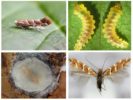
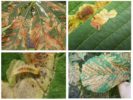
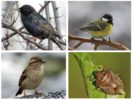
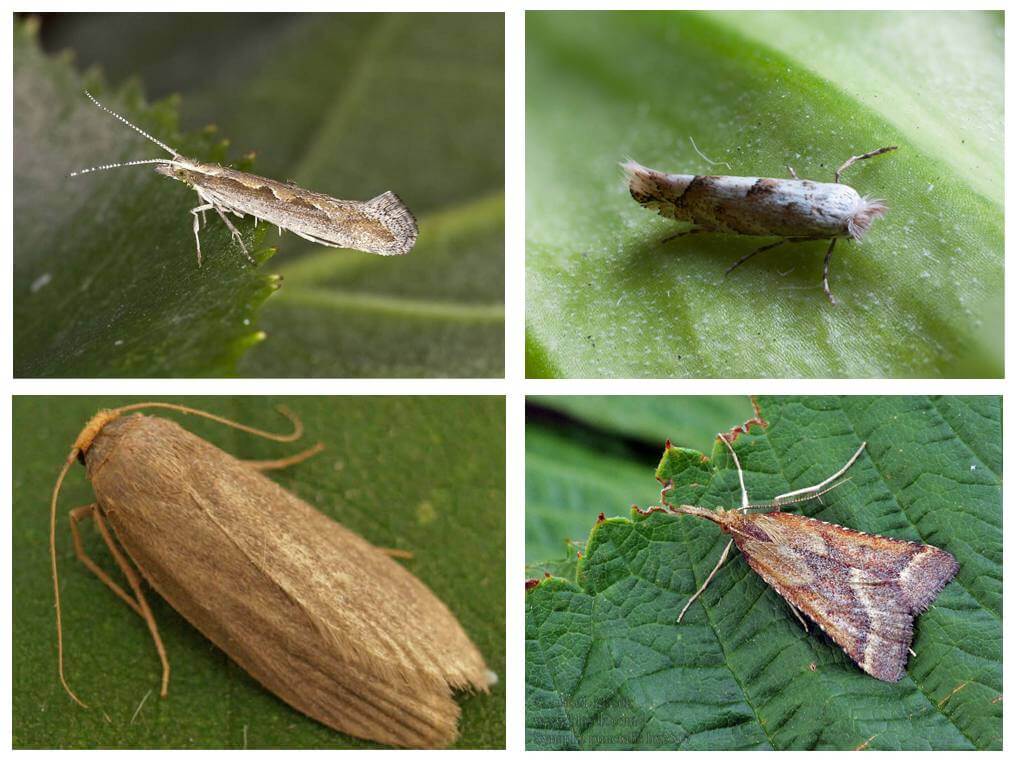
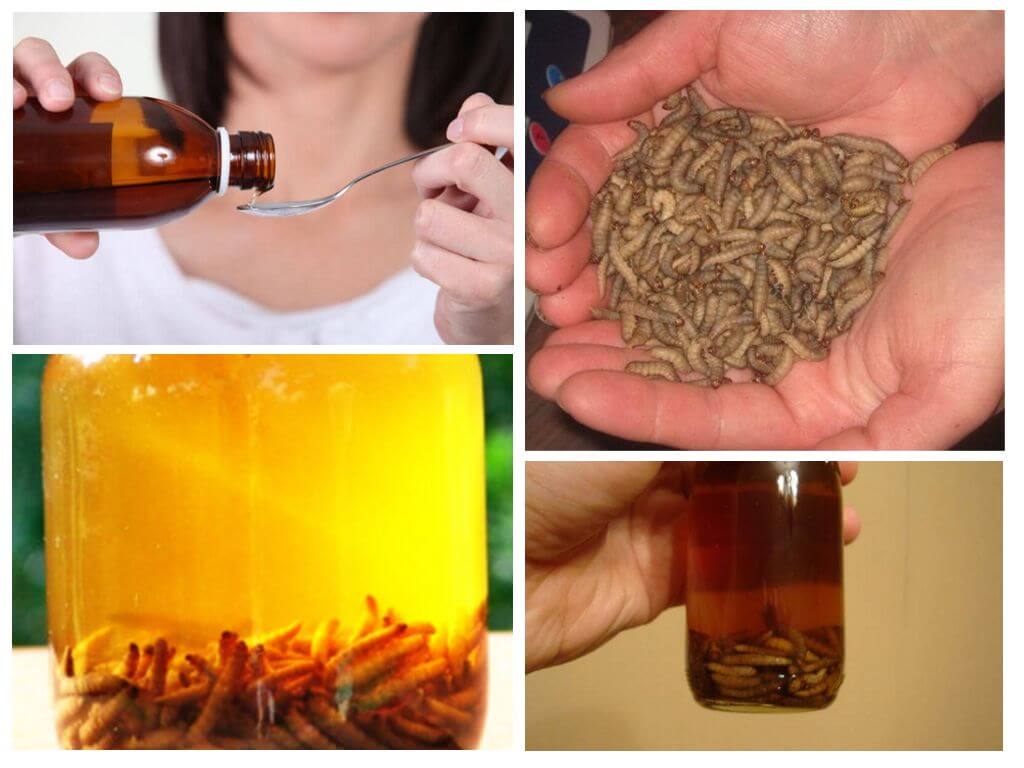
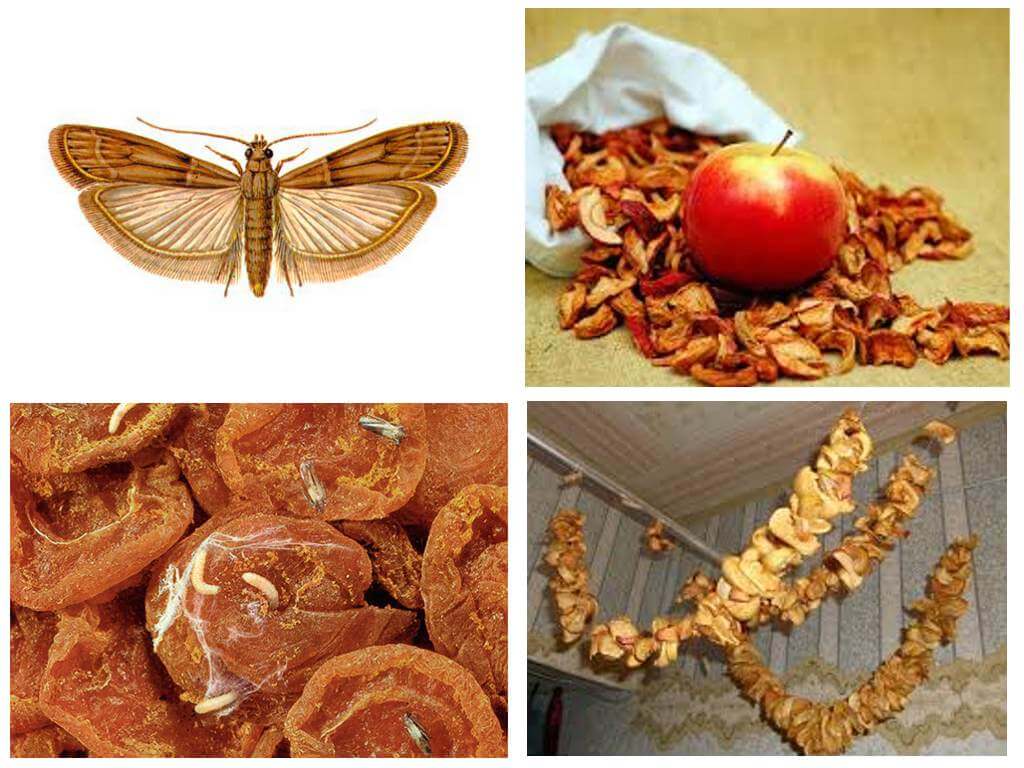
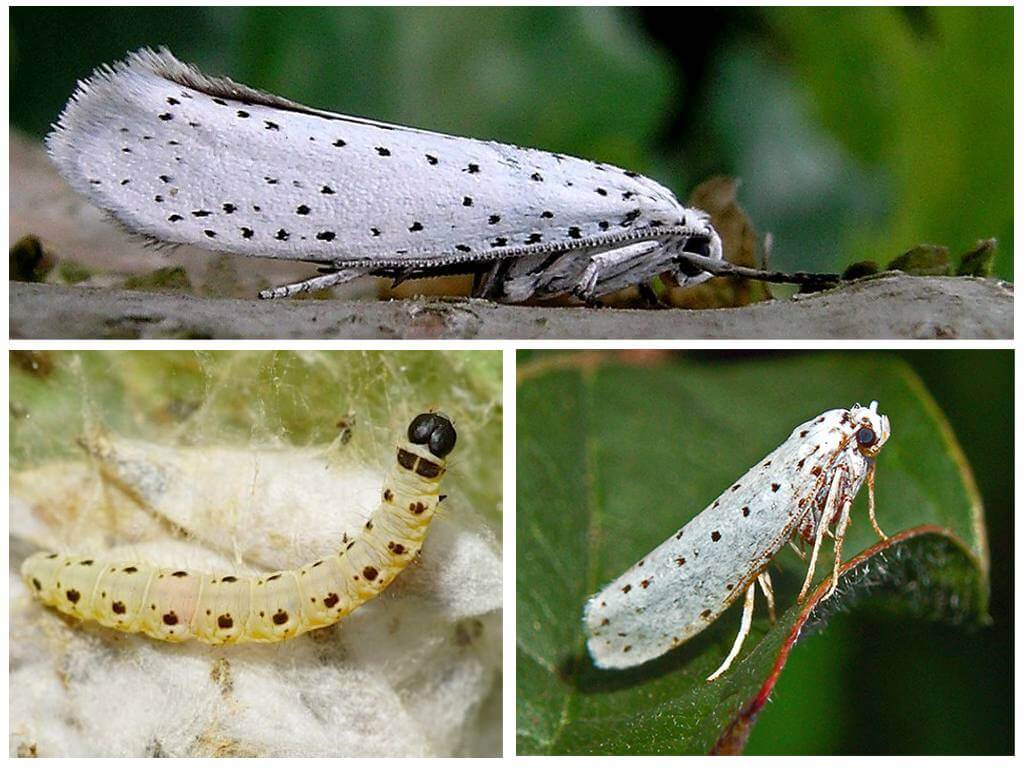
They did not clarify how and where it hibernates. Collecting and burning leaves does not help. Checked.